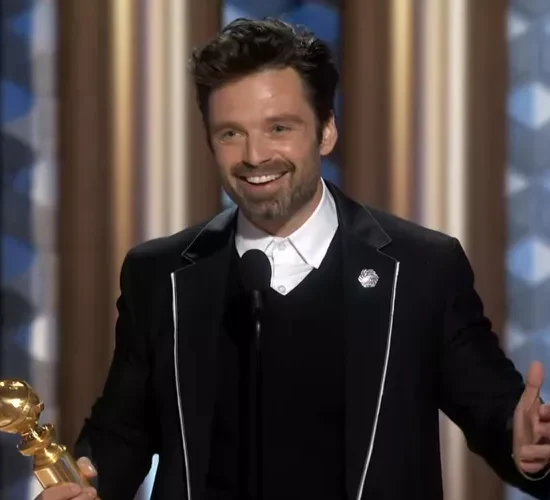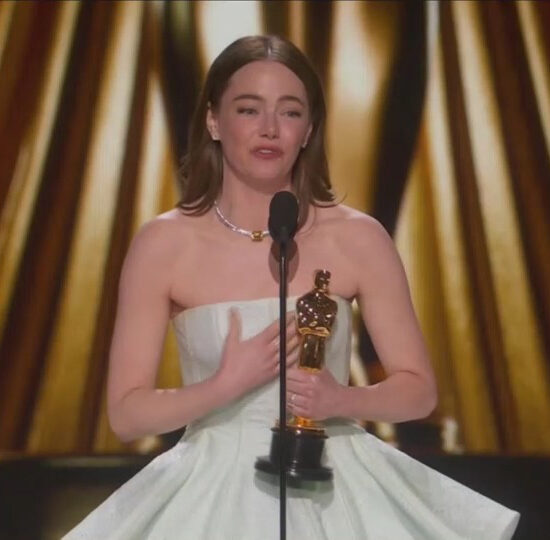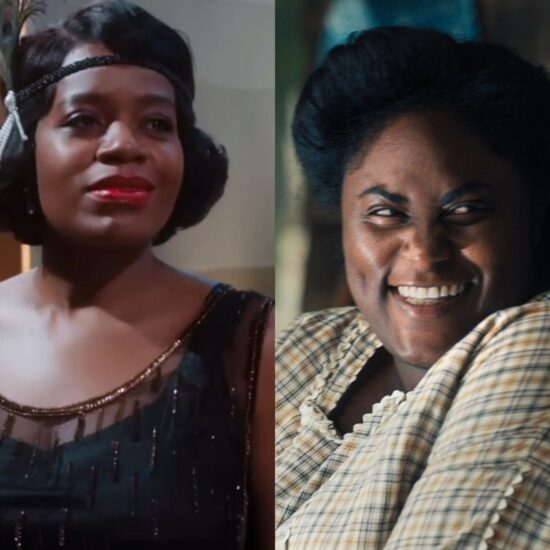
Before last year’s televised Grammys ceremony began, the award show had already garnered viral attention for its use of ASL interpreters on the red carpet.
An accessibility measure rarely presented during the entertainment industry’s major awards shows, the presence of the sign language interpreters was the byproduct of more than a year’s worth of conversations between the Recording Academy and Recording Artists and Music Professionals With Disabilities (RAMPD), a global network of artists who consult and advise around disability inclusion and accessibility for the music and events industry.
Those conversations started informally roughly a year earlier when EDM artist and Grammys New York board governor Lachi connected with Valeisha Butterfield Jones, the Recording Academy’s then vp of diversity, equity and inclusion. The two were on a panel exploring how the Academy could support artists within the larger disability community as Lachi, a Black female musician who’s herself part of the blind, low or limited vision community, was beginning to lay the groundwork for the yet-to-launch RAMPD.
They would stay in touch, even as Jones moved into her new position as co-president of the Recording Academy (she has since left for Google), Ryan Butler stepped into the DEI role ahead of the 64th annual show and RAMPD officially launched in January 2022. As a result, the collective of disabled musicians was poised to drive conversations in the show’s lead-up, “especially in how to make our show more accessible not only for those in attendance and the audience but for those who are viewing the show at home,” Butler tells The Hollywood Reporter.
As the Grammys returned to Los Angeles this year, RAMPD moved from an unofficial consulting role to an official advisor to the Recording Academy in order to set a new precedent for equitable access at major awards shows.
From the Crypto.com Arena venue (formerly the Staples Center) and the Grammys’ Premiere Ceremony to the red carpet, here’s how the Recording Academy and RAMPD are not only bringing attention to but also moving the needle on accessibility when it comes to one of the biggest live music industry events.
New Partners and Planning Infrastructure Were Introduced for 2023 Show
Before the 2022 Grammys, Butler met with RAMPD and other disability inclusion consultants upwards of 10 times ahead of the show to address goals and plans for the in-person ceremony and telecast. RAMPD also brought in Roy Samuelsen, a voiceover artist and audio-description advocate, to help the show deliver the live visual descriptions for the blind as part of the live telecast, for the first time in CBS’ history.
The academy’s communications department also hired Amber G Productions, an ASL interpreting agency that specializes in music and entertainment, to support interpretation on the carpet and in the media and press rooms.
“Lachi and the team at RAMPD offered lots of guidance leading up to last year’s telecast and that was very important, especially as we were moving venues from Crypto.com to Las Vegas and still trying to make sure we implemented the inclusion rider in a meaningful and impactful way,” Butler says.
But Lachi says there were fewer meetings and a more focused pipeline this year, “as we already knew more of what we wanted from the things we learned last year.” Instead, they had a post-show discussion in May 2022, early conversations for the 2023 ceremony in the fall and on-site meetings during Grammys week that were all more “substantive.”
“It’s about intentionality and the intention to not only want to change but to actually want to encourage future change through what you’re doing,” Lachi tells THR. “There is a lot to be said about the ramps, the consultations, which were very fruitful.”
RAMPD wasn’t in direct communication with the telecast producers nor CBS, which incorporated several of their recommendations. But the disability and inclusion advocates worked with the Recording Academy’s DEI production team on implementing accessibility within the events the academy oversees. That includes the carpet for the main and Premiere ceremonies, GRAMMY Live which streams both and the media room.
To do this, RAMPD teamed with Andraéa LaVant’s LaVant Consulting (LCI) to provide American Sign Language interpreters and production consultation, with live audio description through Descriptive Video Works during GRAMMY Live. “RAMPD wants to have relationships with anyone who is working on making their venue more accessible or ensuring that their DEI measures include accessibility or disability inclusion within the music space, within the entertainment space and within the performance space,” Lachi tells THR. “
Also new this year was consultation through RAMPD — which was recently awarded by the UN-supported Project Zero and has partnered with companies like Netflix, Coachella, the Wavy Awards and the National Independent Venue Association — about sensitivity training for certain members of the Grammys team to ensure they could implement accessibility measures accurately and respectfully.
“We have had honest and earnest consulting meetings with the production team,” the artist says. “Like last year where we did a social media consulting session to make sure they’re getting the language right, getting the captioning right.”
RAMPD and the Recording Academy Produced Historically Accessible Red Carpet Media Access
Last year, the Grammys delivered one of the biggest signs of progress within the Emmy-Grammy-Oscar-Tony circuit. While many ceremonies and telecasts are only focused on what’s happening inside the theater and during the live airing, the 2022 Grammys prioritized inclusion in the pre-show, one of the most buzzed-about awards show elements, but something that is frequently forgotten in accessibility conversations.
The 64th annual awards featured the Amber G Productions team running ASL interpretation for the academy on both the carpet and in the media rooms. That continued this year through the RAMPD and LaVant Consulting-led ASL interpretation, with more prominent red carpet placement for interpreters.
“It was amazing to have the ASL interpreters last year on the carpet, but did as many artists at the top of the carpet take an ASL interpreter there for them as we would have liked? No,” Butler says. “Now we have language that is encouraging everyone to take an ASL interpreter. We’re thinking about what that actually means for the frame and where the ASL interpreter is in the shot.”
Additionally, the duo confirmed that this year, the Academy briefed the press ahead of Sunday night that accessibility tools were offered. The shift follows confusion and criticism around ASL interpretation during last year’s ceremony, which some on social media attributed to the artists — like Olivia Rodrigo — instead of the Recording Academy.
For those in the blind and low vision communities, live audio description was planned as part of the GRAMMY Live red-carpet special, but ultimately did not happen. It would have marked a first for the Recording Academy event.
A desire to be more intentional about publicizing what accessibility steps the show is taking also led to Lachi walking the carpet Sunday, where she was available to discuss the show’s accessibility efforts and the need for disability inclusion onstage and off at live music events. “I’m really excited that we get to showcase the progress,” she says. “It is a very beautiful thing that this community needs to see. Sometimes when we do the work, work happens.”
She was supported in person by fellow artists with disabilities including comedian Nic Novicki, influencer Tiffany Yu and a representative from RespectAbility, as well as RAMPD members such as vp Precious Perez, Namel Morris and James Ian.
Disability Inclusion Became a Part of Grammy Week
Butler said that this year’s week of Grammy events saw his DEI team move towards making those spaces more inclusive of music’s disabled community. And they’re doing it through an initiative that debuted in 2022 — the inclusion rider — which was launched primarily through official partnerships with GLAAD and Color of Change.
The rider allowed the academy to collect data on ethnicity, race, gender and sexuality during the 2022 show to evaluate the event’s hiring practices. Last year’s event featured a production staff that was 39 percent female and a staff and crew that was 24 percent BIPOC. But that initial survey didn’t include questions about accessibility and disability, an important part of the show’s larger DEI work.
“Knowing how many of our staff and crew are identifying as disabled will really help us to push the needle,” he says. So for the 2023 show, the Recording Academy is collecting data in a more “formal” way through yet another self-ID survey for the telecast, Premiere Ceremony and Grammy Week events, in an effort to implement accessibility measures across Grammy events.
“I think that the telecast and the telecast red carpet is where we will gather most of our key learnings that can then be applied to our other events,” Butler says about this year’s efforts and their potential impact on next year’s ceremony and Grammy Week. “What we do at the telecast does set the standard for all of our other events.”
The Grammys Venue Has Its Own Accessibility Support
RAMPD had no direct collaboration with accessibility measures at the 2023 Grammys venue of L.A.’s Crypto.com Arena. But through the organization’s talks with Butler and the Recording Academy, at least one thing was different for attendees with disabilities.
Like last year’s Vegas venue the MGM Grand Garden Arena, the Crypto.com Arena also featured ADA-compliant seating, and the academy provided thoughtful messaging to attendees with and without disabilities. “As part of our work with [RAMPD] and LaVant Consulting, we’re making sure that those who actually need those seats and those who require those seats are filling in those seats,” Butler says.
But that’s only the tip of arena-based inclusion efforts. As part of the venue’s general policies, accessibility tools and support include team member training; assistive listening devices; TTY services for those who are deaf, have hearing loss or a speech impairment; real-time captioning services courtesy of VITAC via a browser-based mobile phone; wheelchair services including escorts and storage; and sensory accommodations.
For those with sensory-based processing conditions, Crypto.com Arena and KultureCity teamed to offer sensory bags, weighted lap pads and quiet areas. The sensory bags — which are no-cost — include fidget tools, noise-canceling headphones and other potential resources like anti-glare glasses and communication cards. And unlike most venues, all of these services are outlined in one easy-to-navigate location on the Crypto.com Arena website.
The Grammys Telecast Featured Additional Accessibility Measures
Driven by recommendations from RAMPD, the 2022 ceremony attempted to elevate the presence of ASL both in-person and during the ceremony’s telecast. Inside the theater, where accessibility decisions are left up to CBS and the show’s producers, there were at least two interpreters in the room.
Butler told THR back in 2022 that “it is my goal to have it as part of the telecast and visible during the telecast,” but it’s an aspiration that will ultimately not come to fruition this year. ASL interpreters were once again in the room but remained off-camera for the event whose larger production staffing is led by ARRAY CREW.
Beyond sign language interpretation, the Grammys featured a stage with a built-in ramp, designed for the second year in a row by Yellow Studio. as part of its design. It’s a measure RAMPD successfully advocated for last yea and that Lachi previously told The Hollywood Reporter, has “really become the symbol of intentional disability inclusion at award ceremonies.”
The telecast also featured live captioning, something Butler says RAMPD discussed as important to have but noted couldn’t be the only option. (“Sometimes the live captioning is completely wrong because the person sitting there typing it is typing too fast,” says Butler, who was made aware of the distinction by RAMPD. “And maybe you’d prefer to just switch to ASL.”)
Criticism of Bad Bunny and Busta Rhymes’ music and lyric captions during the 2023 show underscore that position. Spanish language closed captioning was added for on-demand Paramount+ streams for the former’s opening performance.)
Finally, audio description returned, continuing a major win in the space after the 2022 broadcast served as CBS’ first-ever live event featuring visual descriptions for the blind. Like last year, the 65th annual live telecast’s AD was provided on the Secondary Audio Programming (SAP) channel by VITAC and Audio Eyes, who were behind the AD and live captioning for the 2022 Oscars, Tonys and SAG Awards. (The audio description for Paramount+ was and will continue to only be included in post-live streams.)
Where the Grammys Are Still Looking to Grow
The needle moves between last and this year’s Grammys illustrate how much can evolve in a short time, but also how many stakeholders must buy in to make live events more inclusive and accessible. “The Grammys are a big conglomerate-esque event that is beholden to a ton of things,” Lachi told THR.
Both Lachi and Butler have expressed pride to THR following both shows in what they’ve been able to achieve so far while noting that it’s imperative the show be committed beyond simple compliance — and get investment from both internal and external stakeholders.
Following the 2022 show, Butler highlighted wanting “ASL interpreters onstage at the Premiere Ceremony,” as one goal, while Lachi and her fellow RAMPD members also indicated a desire to see picture-in-picture interpretation during the telecast or even a separate ASL stream akin to the Oscars. It’s something Butler has spoken to the Film Academy — who launched an ASL live stream — about how to implement. Within those conversations could be an answer and a future show change that several musicians and accessibility advocates told THR was an important part of inclusion.
Among Lachi and RAMPD’s other ongoing asks are self-description, the onscreen and onstage visibility of disabled presenters and performers and the hiring of people with disabilities below the line, something that the inclusion rider will now help track. But for the EDM artist and disability advocate, one of the most immediate and easy areas for improving accessibility may be social promotion and marketing.
After the 64th annual show, musicians with disabilities in attendance, as well as disabled fans at home, took to social media and, in post-show interviews with The Hollywood Reporter, emphasized the need to know what was available to them. “They could better serve TV viewers by letting them know what accessibility measures have been implemented and how to access them,” Lis Sniderman, a RAMPD member and singer-songwriter, told THR last year.
Websites with accessibility options like the Crypto.com Arena site as well as press releases and social media campaigns highlighting the measures would ensure the ability to engage the Grammys’ work towards an equitable experience. (As of Sunday afternoon, neither the Recording Academy nor CBS had published social media statements or releases about the show’s accessibility measures for the carpet, media room, premiere ceremony or telecast. Reps for the academy, CBS and Paramount+ confirmed those efforts to THR.)
“For RAMPD, it was great for us to be able to consult on accessibility and have adequate accessibility measures in place. But having a large entity or a very large public event discuss the accessibility measures allows the disability community to feel included, to tune in and feel like they belong,” Lachi says. “There’s also still just the element of accessibility. If you’re putting these tools in place, let us know about it. An accessibility measure is letting us know the accessibility measures.”













